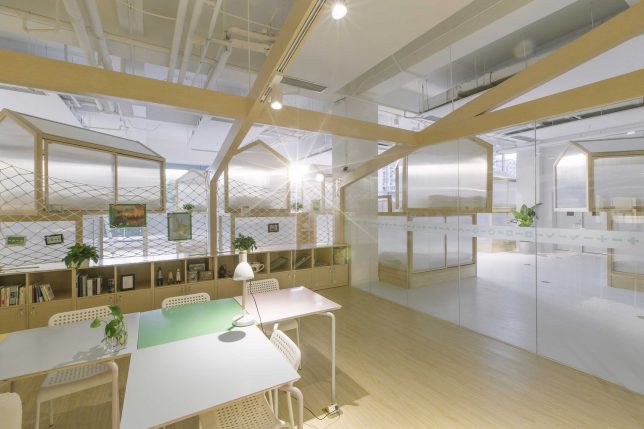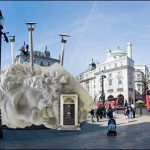This article was originally published on Elliot Nahm’s website, and is being republished in full here on DPReview with express permission from Elliot.
Ah, you’ve just received your first camera over the holiday season, and you’re itching to use it. Or, perhaps you’re just looking for something new to photograph this year. Well, allow me to make a suggestion: You should go photograph a hot air balloon festival!
Why hot air balloons? I personally enjoy their vibrant colors against the sky; it’s a pleasure for me to meet the pilots, and their crew; and, last but certainly not least, it’s fun to fly in them!
Some of you may be surprised that these festivals have already been happening in the winter. It should come as no surprise, though, that the number of events ramp up as the weather gets warmer. Check out www.hotairballoon.com for information of any events near you.
To be frank, I’m no master of photography, and there are bigger names photographing hot air balloons. However, these tips should still help make your first hot air balloon festival a more photographically enjoyable experience.
Note: these tips apply more for festivals based in the United States. I understand that other countries do some things differently, but many of the tips should still apply.
More days, better chances
I’m going to start with the most important tip of all. Try attending as many days as possible for the best chances of getting great photos. Hot air balloon festivals typically happen for at least two days, usually over a weekend. Larger events can span the entire week. Understandably, this can be difficult to budget time for, but the time isn’t just for photos, it’s also to account for weather.
To many peoples’ dismay, hot air balloons cannot just fly whenever. High winds, rain, smoke, etc. can all prevent mass ascensions (many balloons flying together), and balloon glows (balloons glowing at night) from occurring. Balloon festivals play it very safe, and generally do not fly if winds are above 8 miles per hour (12.9 kph). You may be at an event that only flies once out of their allotted days.
I personally was at the Lake Havasu Balloon Festival & Fair this year when high winds canceled all six flights. Weather happens, and the more days you have, the better your chances of a successful day.
Get close
This tip is in almost every type of photography guide out there, and it still applies to balloons. Get close! I’ve seen so many people stand way out on the edge of the field using their cameras at the widest focal length possible. Then they pull out their smartphones, and take the same picture. C’mon, folks, you’ve already put so much money into a camera, why use it in the same pedestrian way as you would with your smartphone?
Get onto that field and get closer to the action.
Photograph the pilots, and the crew. Capture the detail in the balloon fabric. Witness the shadows from inside of the balloons. Do something more than just being an observer. Wide shots from the edge of the field have their place, but recognize that many other people already have that angle covered.
While being up close, be courteous, and follow pilot and crew instructions. I will list some DO NOTs that you need to heed:
- Do not step on the balloon fabric. Just play it safe, and don’t touch the balloon.
- Do not smoke by the balloons. There have been many cases of carelessly tossed cigarettes burning holes into the fabric.
- Do not bring pets near the balloons. There have been many cases of claws tearing the fabric.
- Do not stand on, or cross, laying ropes. Always go around.
- Do not peek inside of the balloon without asking crew and pilot permission first. You may be getting in the way.
- Do not get in the way of the crew.
- Do not stand right behind the basket when the pilot starts shooting flames. You will get crushed.
- Do not be in the flight path during take off. Flight directors, or crew, will try to clear the area—follow their instructions.
I empathize that a list of DO NOTs doesn’t give much credence that this is a fun subject to photograph. This is all about safety though, and we should all take safety seriously.
Note: some festivals actually fence observers off from the field. In that case, you need to start planning, and the next tips can help with that.
Find a prominent feature
Is there a body of water, or some cliffs near the launch field? If so, you want to keep an eye on balloons approaching those areas. Many pilots aim for these features, and you can get some of the best shots at these locations.
$ (document).ready(function() { SampleGalleryV2({“containerId”:”embeddedSampleGallery_0530768285″,”galleryId”:”0530768285″,”isEmbeddedWidget”:true,”selectedImageIndex”:0,”isMobile”:false}) });
At bodies of water, balloonists like to perform a “splash-and-dash” in which the pilot will touch the basket to the surface of the water, and just float there. This provides a great chance for you to get a reflection of the balloon on the water.
For cliffs, pilots like to hang around them, and just go up and down them. If a balloon has a seated pilot instead of a basket, you may find the pilot “running” along the face of the cliff. Pilots also like to fly close to the tree line, or land onto hay stacks to flex their skills. So you may find an amusing moment even if there are no significant land features.
Larger balloon festivals have flight directors. These people give the pilots the “okay” before taking off. You’ll often find these flight directors wearing a uniform that stands out. Taking a photo of them can provide great contrast to the balloons.
Attend the pilot meeting
As a photographer, understanding the conditions the pilots are flying in can help for planning where you want to be. During this meeting, someone will release the “pibal” (pronounced ‘pie-ball’; short for pilot balloon). It’s just a typical party balloon, but it’s a great indicator for how the winds above are behaving.
If, for example, the winds are blowing south, take a note of what’s down there and find a place where you want to be. This information is especially useful if you plan on taking photos away from the launch field. If the mass ascension is canceled… well… go enjoy your breakfast at the nearby Denny’s before everyone else floods it.
The pilot meeting is also a good place to find the opportunity to crew for a balloon which is conveniently the next tip.
Crew for a balloon, and get free flights
Volunteer to crew for a balloon, and you may just have a chance to get a free flight out of it. Commercial flights can cost anywhere from $ 180 USD to $ 450 USD, so if you can fly for free, you had better take that opportunity. Understand, though, that crewing does not always guarantee a flight. Sometimes the pilot will already have paying passengers, and you may never fly. Still, your chances are pretty decent, and a chance to fly for free is definitely better than none.
While crewing, consider having your camera on a sling so that you can use both hands freely to do your duties. If you spot a moment, take a quick snap of it, and continue your crewing. While pilots are grateful for the help, they won’t sign you on again if you don’t do what is asked of you.
Another incentive for crewing is free food. Many festivals cater a few meals for pilots and crew. Pilots often have tailgate parties as well. If you earn your pilot’s trust, you’ll likely be invited to these. Saving money is always good, right?
Fly!!!
Whether you pay for a flight or you get it for free by crewing, flying is always a great place to be for taking pictures. Flying in a hot air balloon is quite the different experience in contrast to helicopters or fixed wing aircraft. Because the balloon moves with the wind, you too are moving with the wind, so you don’t really feel it at all. Some passengers find it to be a very odd sensation.
It is tempting to go wide with your shots, just don’t go too wide. In my opinion, making balloons super tiny just doesn’t look too good. Wide angle lens distortion is heavily pronounced on the balloons on the edges, and sometimes the simple lens profile fix isn’t enough to correct it. If the pilot allows for it, bring a telephoto lens as well when you go up.
Note: weight is an issue for ballooning. Sometimes pilots won’t accept a camera bag, or second lens on board to keep things as light as possible. Also, having extra objects in the basket can be a hazard.
$ (document).ready(function() { SampleGalleryV2({“containerId”:”embeddedSampleGallery_1252027089″,”galleryId”:”1252027089″,”isEmbeddedWidget”:true,”selectedImageIndex”:0,”isMobile”:false}) });
Attend the balloon glow
Although I greatly prefer the mass ascensions, balloon glows are still necessary to having the full experience. You may find photographing the balloon glows more difficult however.
Wide aperture glass is highly recommended, and higher ISO is required. You can attempt to use a long shutter time but, if there’s any breeze, you will have blurry balloons. I personally don’t like to cranking up the ISO so, I get close to the light sources (the balloon burners), and use ISO 1600 or less. I also greatly prefer the colors of the balloons during the day than the glow.
And go again…
If you ever want the best photos of anything, you must keep revisiting it. Sometimes we can get lucky with getting a grand slam of a photo on the first try. Between you, and I though, that rarely happens. If you enjoyed your first balloon festival, go to another one, and another one, and then the same festival again the near year.
Check out www.hotairballoon.com for finding out festival information around the world. It’s by far the best resource I’ve come across, and I believe that you too will find it useful.
Whew, what a read, right? Since you’ve made it to the end, congratulations, I guess. For more examples of balloon photos, you can check out my portfolio, Instagram, and my other blog posts. I hope that you find these tips useful, and take fantastic photos at your first balloon festival!
Elliot Nahm is a Denver, CO-based photographer whose ambition is to be able to travel the world, camera in tow. His two great photographic passions are hot air balloons, and the outdoors. You can see more from Elliot on his website, Instagram, and YouTube channel.
Articles: Digital Photography Review (dpreview.com)





















































































































You must be logged in to post a comment.